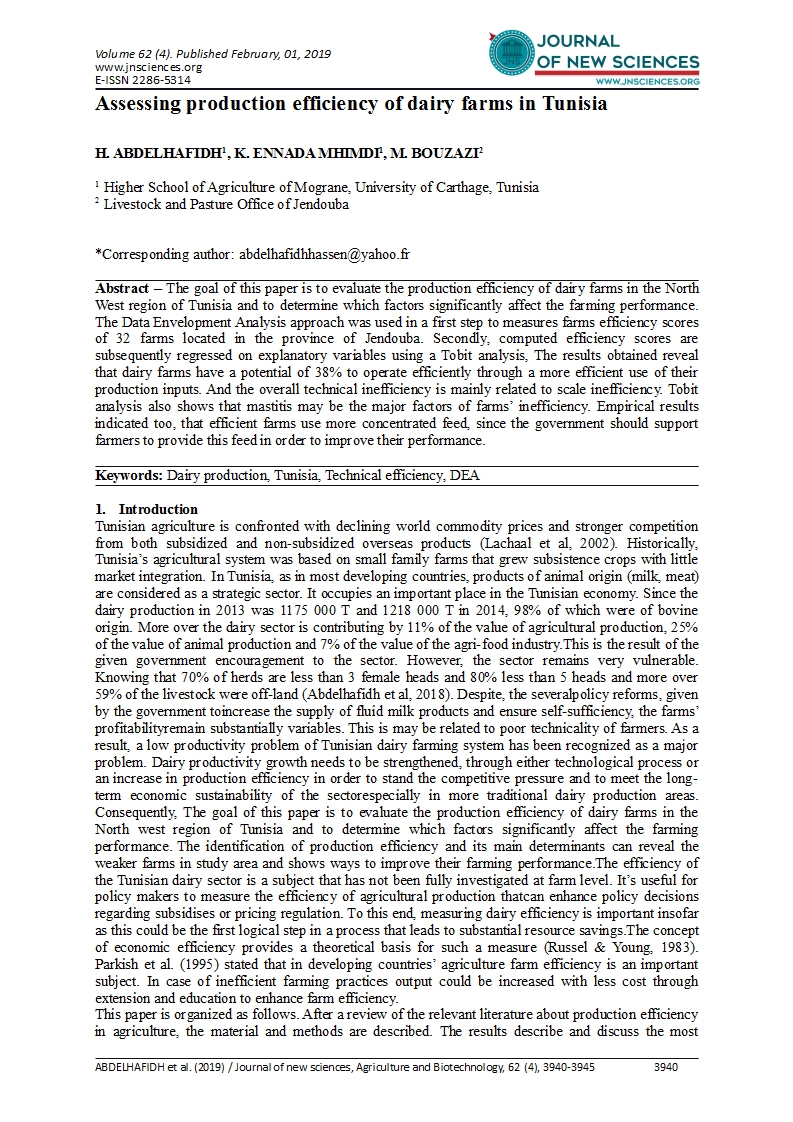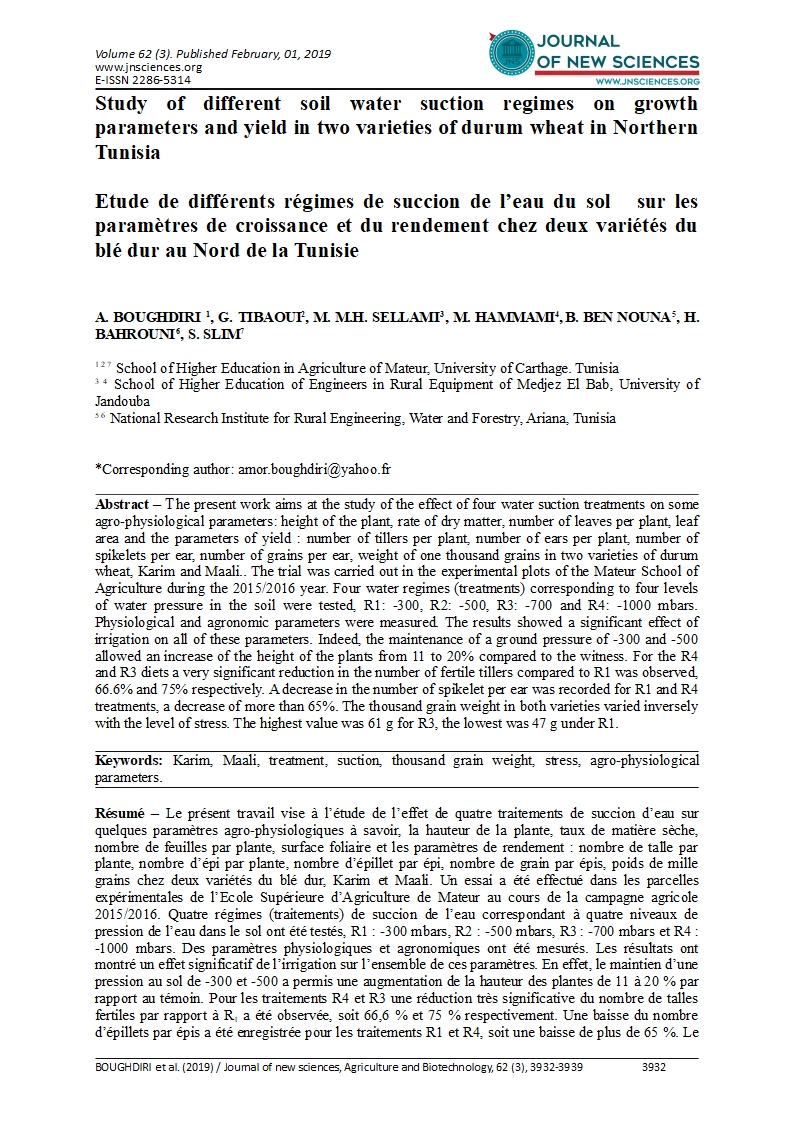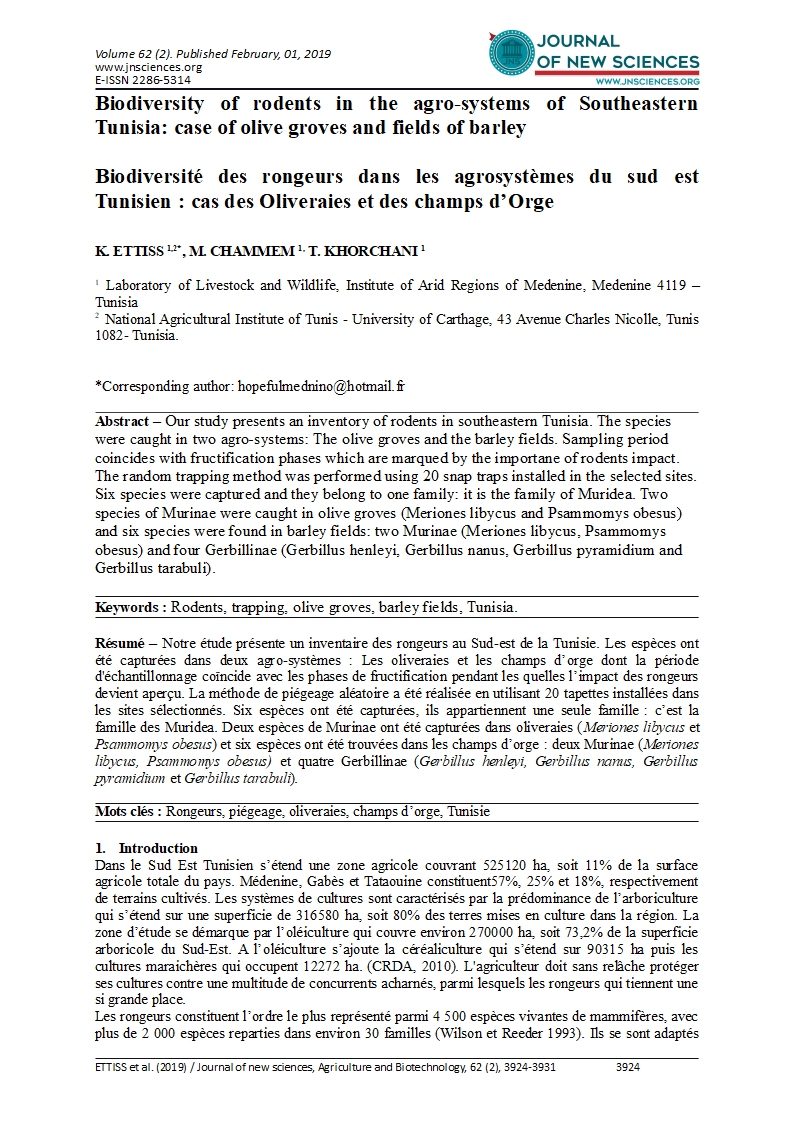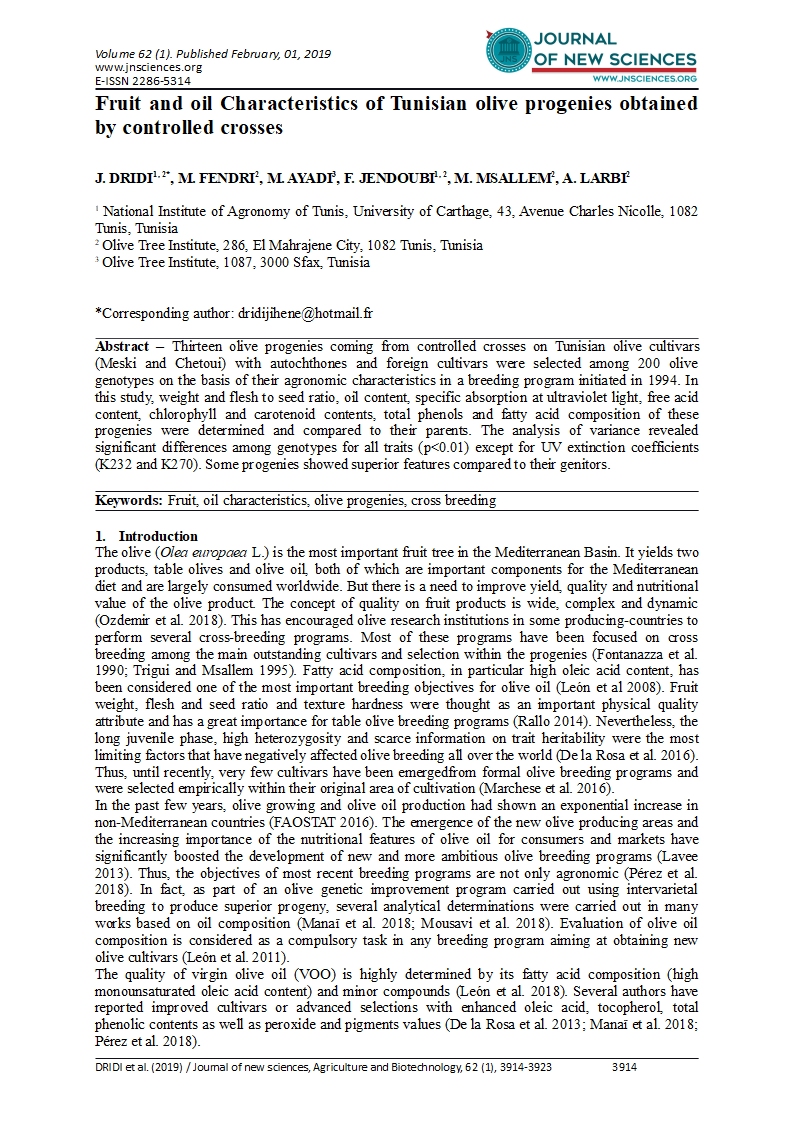- Category: Volume 62
- Hits: 4333
Frozen embryo transplant trial in the cattle in Tunisia
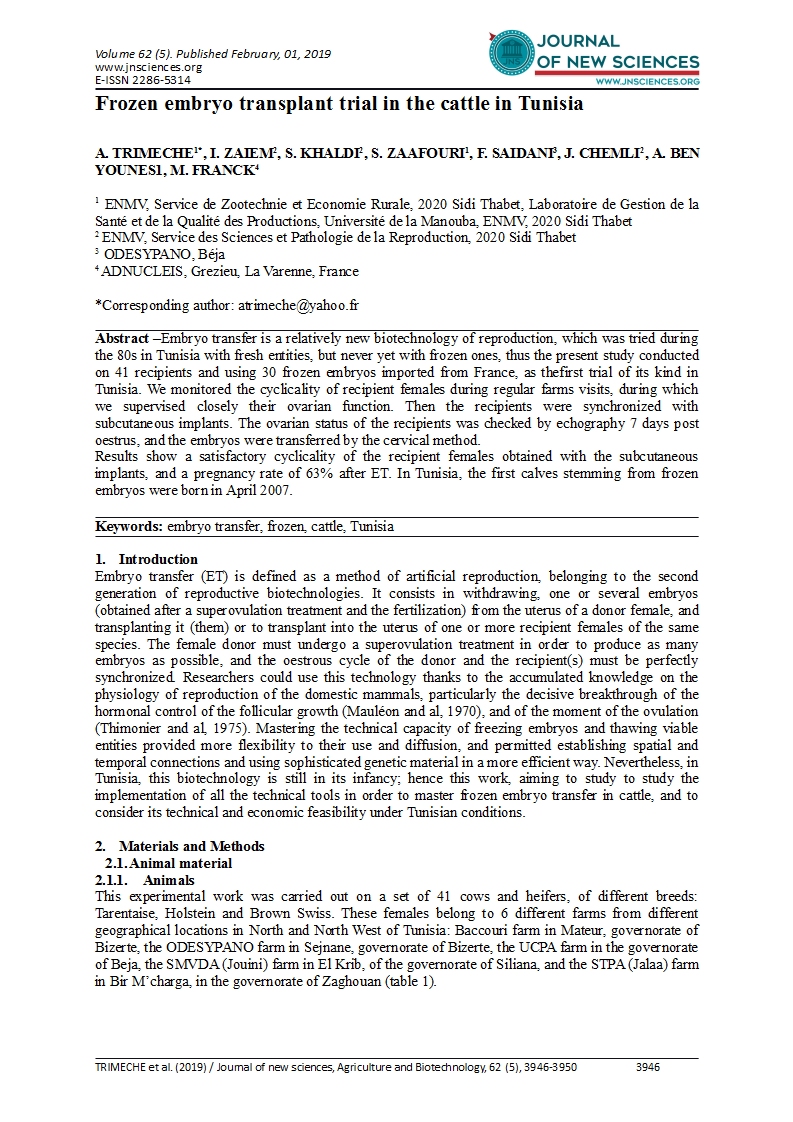
A. TRIMECHE1
I. ZAIEM2
S. KHALDI2
S. ZAAFOURI1
F. SAIDANI3
J. CHEMLI2
A. BEN YOUNES1
M. FRANCK4
1 ENMV, Service de Zootechnie et Economie Rurale, 2020 Sidi Thabet, Laboratoire de Gestion de la Santé et de la Qualité des Productions, Université de la Manouba, ENMV, 2020 Sidi Thabet
2 ENMV, Service des Sciences et Pathologie de la Reproduction, 2020 Sidi Thabet
3 ODESYPANO, Béja
4 ADNUCLEIS, Grezieu, La Varenne, France
Abstract –Embryo transfer is relatively new biotechnology of reproduction, which was tried during the 80s in Tunisia with fresh entities, but never yet with frozen ones, thus the present study conducted on 41 recipients and using 30 frozen embryos imported from France, as thefirst trial of its kind in Tunisia. We monitored the cyclicality of recipient females during regular farms visits, during which we supervised closely their ovarian function. Then the recipients were synchronized with subcutaneous implants. The ovarian status of the recipients was checked by echography 7 days post oestrus, and the embryos were transferred by the cervical method. Results show a satisfactory cyclicality of the recipient females obtained with the subcutaneous implants, and a pregnancy rate of 63% after ET. In Tunisia, the first calves stemming from frozen embryos were born in April 2007.
Keywords: embryo transfer, frozen, cattle, Tunisia

